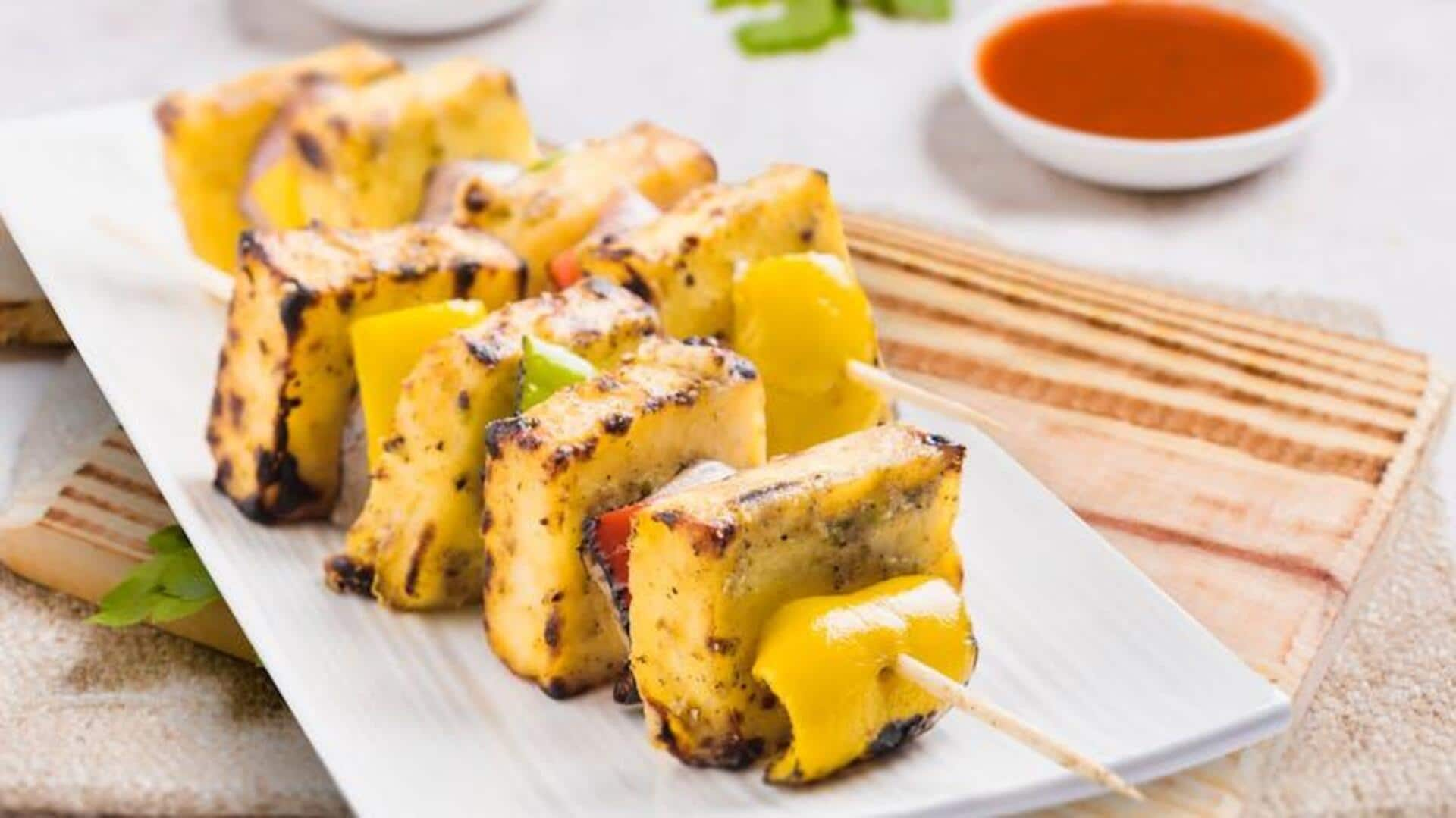
Paneer tikka's journey: How it become a global favorite
What's the story
Famous vegetarian dish paneer tikka has a rich history that goes back to the Indian subcontinent. Famous for its smoky flavor and tender texture, paneer tikka has become a staple in Indian cuisine. The dish consists of marinating paneer cubes in spices and yogurt, before grilling them to perfection. Over the years, it has evolved from traditional clay ovens to modern kitchen appliances, adapting to changing culinary trends, while retaining its authentic taste.
Classic techniques
Traditional preparation methods
Traditionally, paneer tikka was made using tandoors—huge clay ovens that gave it a unique smoky flavor. The marination process would include a mix of spices like cumin, coriander, and turmeric with yogurt. This would enhance the taste and also make the paneer tender. The skewered cubes were cooked over charcoal or wood fire, giving them their signature charred edges.
Contemporary twists
Modern adaptations
With advancements in cooking technology and changing dietary preferences, paneer tikka has seen various adaptations. Today, many people use electric grills or ovens for convenience without compromising on taste. Additionally, variations like adding bell peppers or onions have become common to enhance flavor and presentation. These modern twists cater to diverse palates while maintaining the essence of traditional paneer tikka.
International appeal
Global influence
Paneer tikka's fame isn't limited to India, it has also made a name for itself internationally. In several countries beyond India, it is commonly found on menus as an exotic vegetarian option at Indian restaurants. Its flexibility enables chefs across the globe to play around with local ingredients without losing its essence—making it something everyone can enjoy.
Nutritional insights
Health considerations
Not only is paneer tikka delicious, but it also serves as a healthy option, thanks to the high protein content of paneer and calcium from yogurt used for marination. It yields necessary nutrients without too many calories when made with very little oil or ghee while grilling processes—a factor that has played a major role in its increasing popularity among health-conscious people looking for nutritious yet flavorful meal options around the world today.